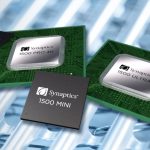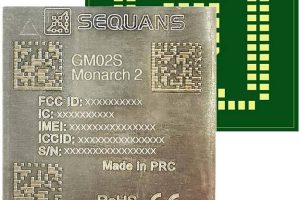Two new video interface chips for the workplace, one supporting Display Port 2.1 and one offer integrated IoT connectivity, to enable more flexible and heterogeneous docking. Both support ultra-high resolution and refresh rates of up to 4K @144 Hz with four simultaneous display outputs from a single chip.
A development kit to enable wireless docking! reducing desktop clutter and allowing more frictionless hybrid work experience. This demonstrates a solution for high-throughput wireless video performance and stability, allowing a display to light up as a paired laptop approaches and the docking station becomes fully enabled before the user sits down. Watch for a major PC OEM design win coming later this week.
Surface audio technology shows the use of the surface of a mobile phone to generate audio—instead of typical speaker driver—to enable a more immersive audio-visual experience with higher efficiency and a port-less, waterproof design. It’s applicable to any display system, from mobile phones to TVs
Synaptics is also launching what it claims to be the lowest power, smallest, most accurate GNSSIC for IoT Devices, which features 80% lower power consumption in a 30% smaller package with 50% greater accuracy, extending battery life, reducing product size, and enhancing the performance of location-based services (LBSs) for IoT devices such as wearables, as well as mobile accessories, asset tagging and tracking systems, drones, and transportation navigation.
New local dimming technology in automotive LED displays with its SmartBridge chip improves display contrast and performance for greater visibility while also enabling larger, higher-resolution displays at lower cost, higher efficiency, and greater form-factor flexibility.
Finally, its recently acquired Emza human presence detection technology has been adopted by Dell and Panasonic laptops, which benefit from its advanced machine learning (ML) algorithms to provide context awareness to reduce power consumption and enhance privacy and security.
 Electronics Weekly Electronics Design & Components Tech News
Electronics Weekly Electronics Design & Components Tech News



